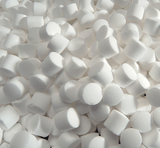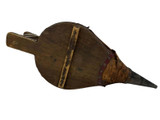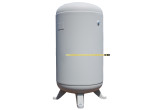Activated Alumina Desiccant Benefits
Activated alumina desiccant is a form of aluminum oxide and is known for its excellent desiccant properties, especially in the treatment of compressed air. It’s a pretty popular and powerful desiccant. Imagine it as a microscopic bouncer, keeping the bad stuff out of your air club.
Activated alumina is produced by dehydroxylating aluminum hydroxide, resulting in a highly porous material. Its large surface area (up to 200 square meters/g) makes it an effective adsorbent for a range of substances, which includes your friendly neighborhood water vapor villain.
Compressed air users typically use activated alumina desiccant to remove moisture. Due to its porous structure, activated alumina can absorb a significant amount of water. Activated alumina can help save the day when it comes to preventing condensation and corrosion in compressed air systems. Condensate is typically removed with a desiccant air dryer.
In addition to moisture, activated alumina can also trap various contaminants like oils, hydrocarbons, and sulfur compounds, further purifying the compressed air. Activated alumina can also be used as a carrier for catalysts in chemical reactions and processes, including the production of polyethylene.
Now the best part? This stuff is tough. It can handle high temperatures and rough conditions without breaking a sweat. Plus, you can reuse it by heating it up, which is both cool for your wallet and the planet. And it's chill around most chemicals, so it's a great team player in all sorts of industrial settings. Activated alumina is environmentally friendly and non-toxic. Although lesser grade desiccant can have dust, activated alumina does not degrade over time, making it a sustainable choice for long-term use.
When it comes to sizes, activated alumina beads come in a variety of options, but some sizes are more popular than others for treating compressed air. Generally, you'll find activated alumina in sizes like 1/8-inch, 1/4-inch, and 3/16-inch beads. The size you choose really depends on your specific needs. Smaller beads have more surface area for moisture absorption, but they can create more pressure drop in the system. Larger beads are less restrictive but might not catch as much moisture. It's all about finding that sweet spot for your compressed air setup and requirements. Don't forget to confirm if there is a screen at the bottom of the air dryer as that may dictate the activated alumina bead size, or you might need a pre-layer of larger desiccant or inert bed support.
Activated alumina desiccant is critical for many industries including pharmaceuticals, food and beverage, and chemical manufacturing, plus basically anywhere there is an air compressor, air dryer and dew point requirement. Activated alumina is a powerhouse for keeping compressed air dry and clean, and with the right size of beads, you can tailor it to fit just about any industrial need. Plus, it's tough, reusable, and environmentally friendly, making it one of the most popular desiccants for drying compressed air. Contact Compressor Shop for help with sizing and specifying the best activated alumina for your application.
Recent Posts
-
The Resurgence of Natural Gas Deliquescent Dryers and Desiccants in 2025
How emission-free deliquescent desiccant technology is paving the way for greener operations and low …Jan 06, 2025 -
The Origins and Evolution of Compressed Air Technology
Compressed air, often referred to as the "fourth utility" alongside water, electricity, and natural …Jun 28, 2024 -
Popular Sizes of Vertical Air Receiver Tanks
Sizing and deciding on the best air receiver tank for your compressed air application can be conf …May 05, 2024




